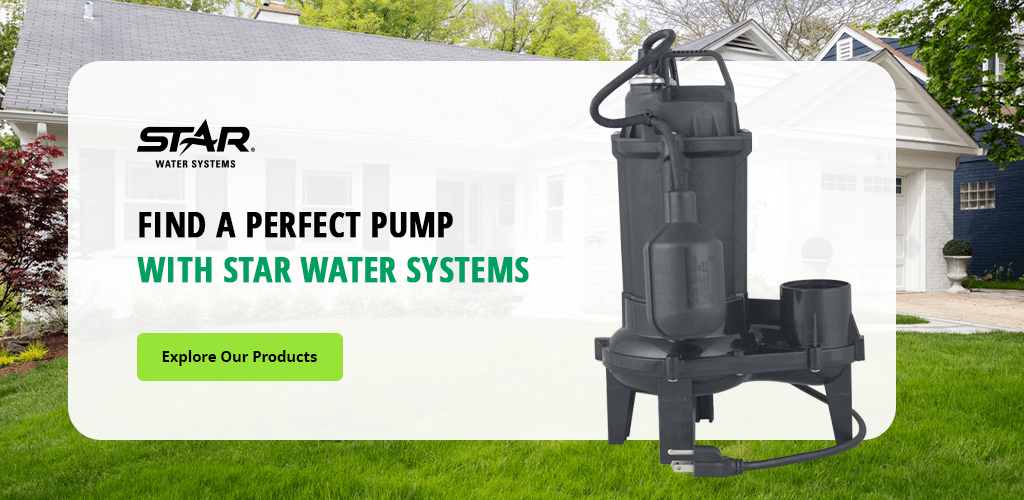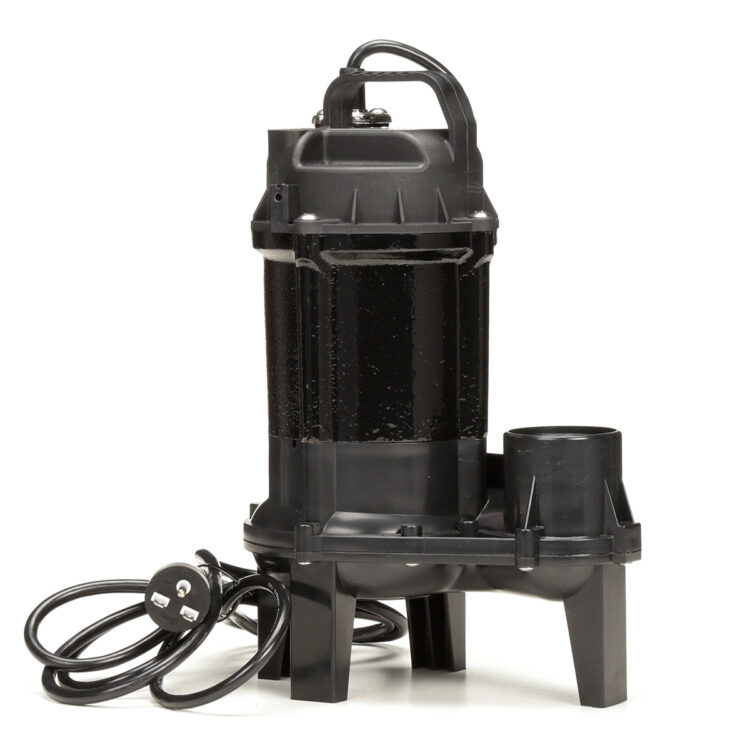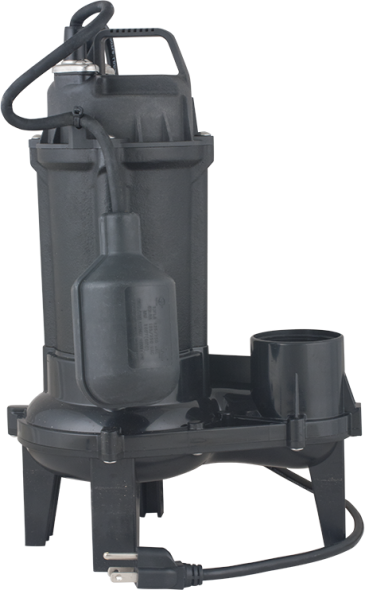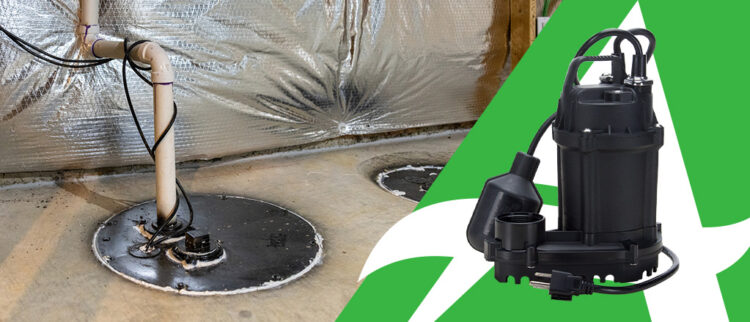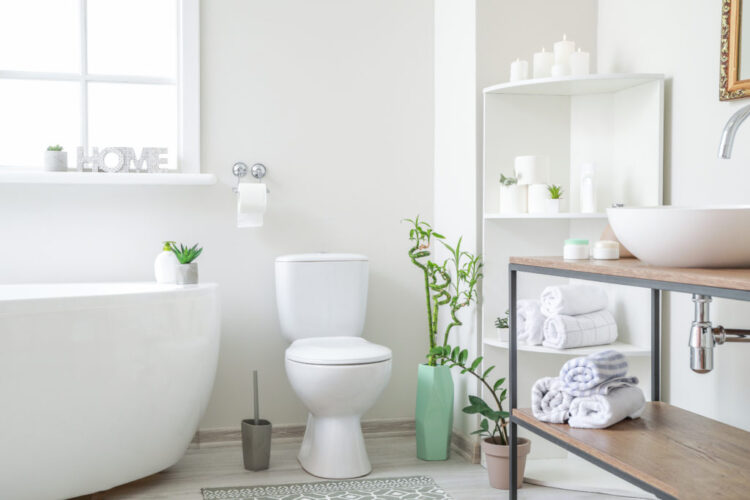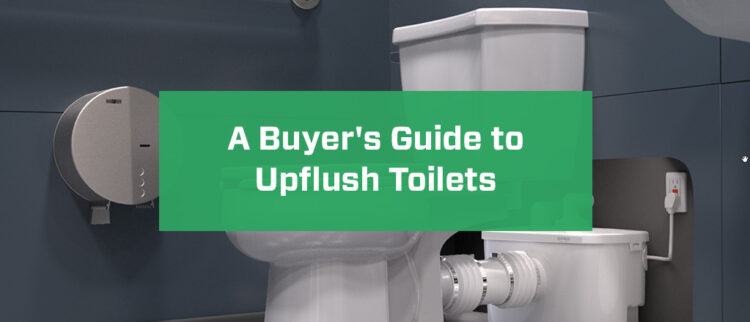Choosing a sewage pump can be pretty challenging — especially if you don’t know that a sewage pump and a septic system are different. But don’t worry! This home sewage pump guide is here to teach you about pump types, pump installation and everything in between.
Let’s start with the basics. A sewage pump moves grey wastewater into your main sewage line. Gravity and pipes are likely enough under most conditions, but when you’ve got a basement, or your home sits below grade, you will likely need to invest in a sewage pump to get rid of waste. If you don’t, the sewage waste could get stuck and have nowhere to go, which could flood your space with water and sewage.
To figure out which sewage pump is right for you, we’ll need to get acquainted with these waste systems. Once we’re done, you will feel confident that you can make more informed choices.
Parts of a Sewage Pump
While there are various sewage pumps available, they have some basic parts in common. Getting to know them will give you a better understanding of pumps as a whole and help you install or repair one. Or it might just give you a chance to brag. Whatever the case, here are the basic parts of a sewage pump:
- Tank or basin: The sewage pump typically sits in a basin below the home. Sometimes, a tank may be used instead of a dug-out basin. However, the important thing is that wastewater has a place to go after it leaves the house. These basins are also used to absorb and redirect groundwater in some cases.
- Motor: This engine powers all of the pump’s mechanisms. It’s responsible for pushing the wastewater uphill and may also help power the grinder to make solid waste easier to transport. It often sits within the wastewater in the basin, protected by our next part.
- Housing: The housing is the pump’s exterior casing. It has two main jobs — protecting the sensitive mechanisms inside it and muting noise from the motor. It’s a relatively simple part that you’ll often have to interact with during installation and repair.
- Impeller: This spinning mechanism impels waste out of the basin and into the discharge pipe. It’s connected to the motor and is the real workhorse of the sewage pump. Impellers come in many different shapes and sizes, allowing you to customize your pump for the materials it will be dealing with most often.
- Discharge pipe: This pipe has one basic job — transporting the wastewater from the basin to the main sewage line. Clean — sort of — and simple.
- Float switch: The float switch is responsible for activating the pump. It sits in the wastewater and triggers the motor once the water reaches a certain height. At that point, the pump sends the wastewater up the discharge pipe, lowering the float switch and deactivating the motor.
- Check valve: This mechanism prevents wastewater from falling back into the basin once it’s entered the discharge pipe. It opens when water is moving out but closes when water tries to move back in.
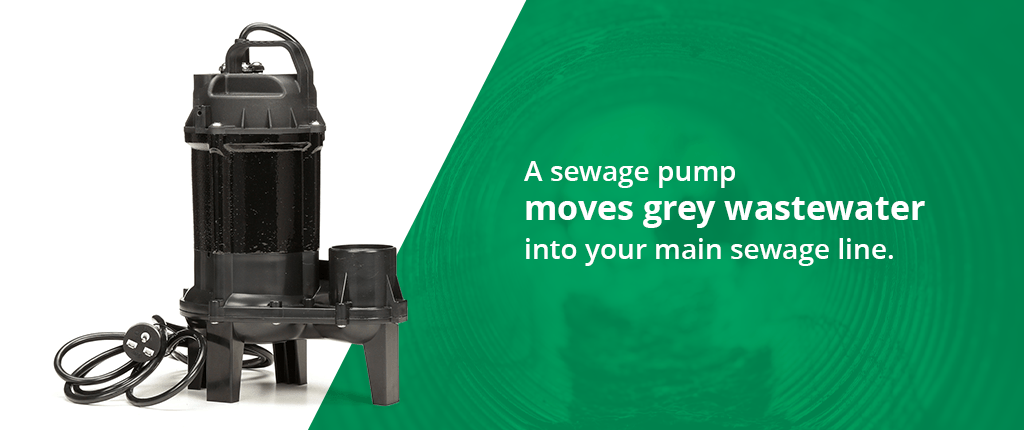
Types of Sewage Pumps
Now that we know what makes sewage pumps the same, let’s take a look at what makes them different. There are three main types — submersible pumps, ejector pumps and grinder pumps. As we take a look at each one, consider your needs and the strengths of each type. We will find the right one for you.
- Submersible pump: What makes submersible pumps distinct is the fact that they sit in the wastewater rather than outside it. Other pumps may have a separate tank that contains the wastewater, but these tough pumps like to get down and dirty. They’re sturdy, efficient and relatively easy to install. They also save you money on a tank.
- Ejector pump: These bad boys work with tanks rather than sitting in the water themselves. They stay high and dry while they wait for the float switch inside the tank to activate. Then, they pump the water out of the tank and into the discharge pipe. These pumps are known for their power and their minimal noise, often forcing water straight up without much fuss.
- Grinder pump: These pumps do exactly what it says on the tin — grind. Whether they sit in the wastewater or attach to a tank, grinder pumps cut up things like toilet paper and solid waste, which minimizes blockages and can extend the life of the pump. These machines are powerful and built to handle heavier loads than other types of pumps.
There is some overlap between these types, so you can mix and match them during your sewage pump selection process to find the perfect equipment for you. You can even consult with wastewater management professionals to get a stronger grasp on price points and the strengths of each pump.
Sewage Pump Installation
We’ve talked a lot about what sewage pumps have in common, but the reality is that each one is different. The same rule applies to installing them. Every pump will require some unique adjustments, but there are some common steps involved. Just keep in mind that your process may need another step here or there.
- Dig and set up the sewage basin: The hole is often dug in the basement. It should be near a power supply and needs to connect to your home’s pipes. Once the hole is dug, you can install the basin itself, which is typically concrete or fiberglass.
- Place and connect the sewage pump: The pump needs to be stable and level at the bottom of the basin. From there, connect to the discharge pipe and the power.
- Test the pump: Once everything is in place, turn the power back on and give the pump some wastewater as a test. Keep an eye out for leaks and an ear out for odd sounds. If you don’t notice anything strange, congratulations! You’re almost done!
- Cover up the basin: Now that everything is in place and working properly, you can seal up the basin with the basin cover.
Those are the basics! But remember, before you start, you should make sure your sewage system complies with local safety regulations. In some cases, hiring a professional for installation might be the way to go. You should also do everything you can to protect and maintain the system over time.
Sewer Pump Maintenance Tips
As with installation, maintenance may be less of a hassle if you leave it to the professionals. However, there are a few things you can do if it seems like something might be wrong. Some of these tips might even prevent a bigger issue before it happens.
- Check the float switch: Sometimes, the float switch gets stuck or damaged. If it does, it can prevent your pump from activating, which could lead to overflow. Freeing or replacing it can resolve this issue.
- Inspect the check valve: Your check valve may eventually end up damaged or stuck in awkward positions. Either case can allow water to flow back down into the basin, which can reactivate your pump over and over. If this occurs, you may need to replace the valve.
- Clean and lubricate the pump: Over time, waste can build up around the pump’s mouth and the edges of the basin. Cleaning these areas can keep things running smoothly longer, so take a moment every so often to clean things out. Some pumps may also require lubrication to maintain performance.
Find a Perfect Pump With Star Water Systems
Sewage pumps can be a tricky — and dirty — business. With Star Water Systems, you don’t have to navigate that world alone. We offer high-quality sewage pumps and quality customer service in equal measure. Wastewater management systems are our solution to your water needs, and we have decades of experience to back it up.
Have pump questions? Fill out our question form or call us at 800-345-9422.
